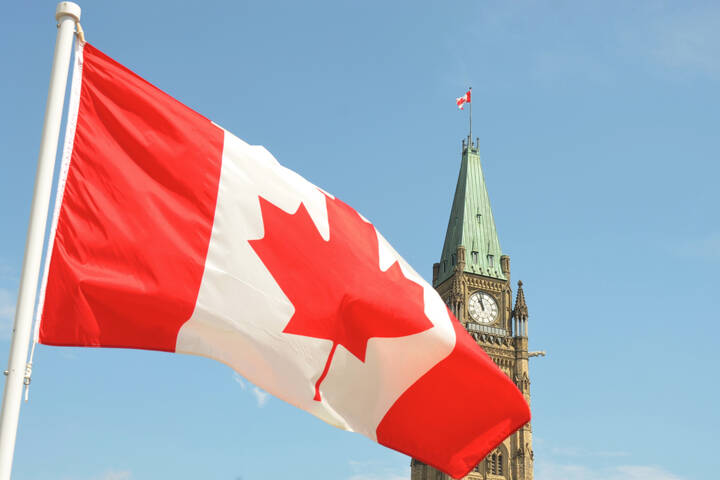
Canada is projecting that 1.9 million residents could get infected with COVID-19
The federal government has released detailed projections for how Canada may fare during the COVID-19 pandemic depending on how strong our epidemic control and response measures are.
The worst-case models are certainly frightening, indicating that up to 80 per cent of the population would become infected and more than 300,000 would die if there were absolutely no controls in place.
Health officials say about 11,000 Canadians are expected to be killed by the coronavirus over the length of the pandemic - even if the infection rate is held to 2.5% of the population. With 5% infected, 22,000 deaths are projected. With no controls, 300,000 would have died. pic.twitter.com/dcI2J64fBl
— CBC News Alerts (@CBCAlerts) April 9, 2020
But if directives like strict physical distancing are heeded and non-essential businesses remain closed, experts predict that we could see around 934,000-1.88 million cases and 11,000-22,000 fatalities from the communicable disease nationwide.
These numbers are if 2.5 to 5 per cent of citizens contract COVID-19, though with strong controls, we are likely to see anywhere between 1 and 10 per cent of the population falling ill.
Some of the charts project all the way into spring 2021.
In dynamic modelling scenario, officials projecting that with strong epidemic control, high degree of physical distancing & high degree cases traced /isolated about 1% to 10% of population could be infected. With NO control measures, red curve with high peak, 70% to 80% infected pic.twitter.com/tbjMgAseGf
— Annie Bergeron-Oliver (@AnnieClaireBO) April 9, 2020
Canada's Chief Public Health Officer Dr. Theresa Tam revealed the stats from dynamic predictive modelling at a press conference on Thursday, also including forecasts for our short-term trajectory: between 22,580 and 31,850 COVID-19 patients and 500 to 700 fatalities in the next week.
Tam said Canada is on a better path than many other countries, such as the U.S., Spain and Italy, with the outbreak here at an earlier stage and growing at a slower rate than others. She attributes this to how quickly many provinces took action to limit community spread, as well as things that we've learned from how other nations are dealing with the pandemic.
Though Canada has a higher per capita testing rate than most places in the world — we've tested 361,969 individuals for the 2019 novel coronavirus at the time of publication — there has been criticism of our testing frequency and methodology, especially in Ontario, where it seems that a lot of likely cases are being sent home to self-isolate undiagnosed and thus undocumented.
Tam admitted that our current national case count of 19,774 is "an incomplete picture," saying that "many more cases are not detected or reported."
Canada's top health officials say the country is on a short-term trajectory for between 22,580 and 31,850 coronavirus cases by April 16. Under that scenario, 500 to 700 deaths are anticipated. pic.twitter.com/0IWLP9dpTX
— CBC News Alerts (@CBCAlerts) April 9, 2020
Health officials expect that 7.7 per cent of our COVID-19 patients will be sick enough to require hospitalization, and 2.4 per cent will require admission to intensive care, though the epidemiology is always evolving and also varies across the country.
They also anticipate a case fatality rate of about 1.2 per cent, though this number is currently observed as 2.2 per cent based on existing case data. Approximately 5.4 per cent of those tested for the virus in Canada have tested positive.
The goal is to, obviously, take steps so that the country sees a best-case situation, with each infected person transmitting the virus to less than one other person. Mitigating factors like social distancing, self-isolation and quarantine, and contact tracing are crucial for this outcome.
Dr. Njoo says the serious of public health measures in place, including quarantine and contact tracing, are essential to break the transmission chain.
— Annie Bergeron-Oliver (@AnnieClaireBO) April 9, 2020
To stay in the lower range of the "green zone" of the first chart, Canada needs to continue implementing and enforcing strong control measures.
As Dr. Stephen Lucas, the Deputy Minister of Health Canada, said at the press conference alongside Tam on Thursday: "We are the authors of our own fate. The actions we can take collectively will help keep us in the green zone."
Latest Videos
Join the conversation Load comments







